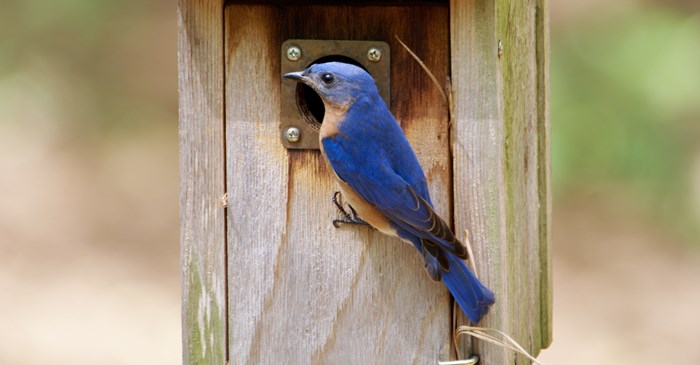If you love feeding and watching birds, setting up a nesting box in your yard is another thing you can do to support them. Many species of birds, including bluebirds, chickadees, wrens, and nuthatches, will readily flock to a nesting box. That’s because these are cavity nesters, meaning their ideal nesting site usually is an old woodpecker hole or some other opening in a dead or dying tree. That's where nesting boxes can be helpful in developed areas.
To get started, here are a few key things to know about choosing a nesting box:
What’s the difference between a nesting box and a birdhouse?
Essentially, a nesting box is a birdhouse, but with a functional design to attract and accommodate birds, whereas the typical birdhouse is more about pleasing human aesthetics. That’s not to say a bird won’t choose a birdhouse with shutters and painted gables. It just may lack some of the more desired features.
When choosing a nesting box, untreated wood is the best material. The structure should have a sloped roof to direct rain away from the nest opening, along with drainage holes in the corners of the floor and ventilation openings in the walls to release excess heat.
Most people set up nesting boxes designed for specific species, which means the opening size is also an important consideration. (For example, wrens and chickadees need a 1 1/8-inch opening, while the Northern Flicker needs a 2 1/2-inch opening.)
What kind of nesting box should I set up?
This depends on the part of the country where you live, as well as the nearby habitat. Do you live adjacent to a field, a wooded area, a body of water, or smack in a developed neighborhood? The Right Bird, Right House tool provided by Nestwatch is a great place to start. You can also check your local Audubon society for suggestions; they may even point you to a local, species-specific nest box campaign.
When’s the right time to set out a nesting box?
It depends on the species you’re trying to attract. For example, Tree Swallows and bluebirds have been known to claim a site weeks before the nesting season to get a leg up on the competition; in these cases, you’ll want to install the box by mid-to-late February.
Nesting boxes make a great addition to just about any yard. Keep your feeder filled with high-quality seed such as Lyric Fine Tunes No Waste Mix, and the birds in your neighborhood will not only have a safe place to raise their young, they’ll have a ready source of high-quality food.
